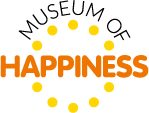The Habit of Happiness
Every month we’re going to bring you a new post on how to make it a HAPPY WORLD through our 10 Habits of Happiness.
But what is a habit? And how can you keep a good one, or break a bad one? Our guest blogger Anya Pearse explains.
Getting into the habit
Have you ever made (and then broken) a New Year’s resolution? Yeah, me too. That’s the thing with a new year; it’s easy to feel like you need to change. How many of us have made goals to ‘eat healthily’, ‘quit drinking/smoking’ or ‘exercise more’, and then failed to follow through?
It’s not surprising. After the excess of the festive period, a clean start appeals. We want to be the perfect future selves we have in our imaginations; the ones who are toned, healthy and happy. Not the tired, lonely and broke version staring back at us in the mirror as we undo the straining button of our jeans with a sigh.
Except that it’s cold, it’s dark, and it’s miserable. We desperately need cheering up; the kind of cheering up that’s easy and familiar. Roll on the deliveries and the box-sets. No wonder we cling to the things that bring us short-term pleasure, even if they bring long-term downsides. It’s only human.
When we KEEP doing these things, though, they become a habit - a behaviour that we’ve repeated often enough that it becomes automatic and happens without thinking.
What we do becomes who we are
This is why mindfulness is so important. We can’t change things if we don’t know we’re doing them. Meditation helps unlock WHY we’re doing them, too, and trains us to be with the discomfort that’s triggering our actions.
So how does this tie into our happiness? It happens on three levels; one, by becoming aware of our actions, we can discover a sense of agency and choice. Just discovering we have a choice can be incredibly liberating, even if it’s just to perceive something differently.
Two, we can take actions that have positive benefits, and reducing actions that cause us harm or sabotage. Choosing to keep our phone out of the bedroom can help us “switch off” from work late at night, and promote a better night’s sleep, for example.
And three, we can become more congruent with the kind of person we want to be. As Jane Austen pointed out, “It is not what we think or feel that makes us who we are. It is what we do. Or fail to do...”. Having a greater alignment between what we do and the person we want to be gives us peace of mind - another factor in feeling happier.
How do we break bad habits and build new ones?
In his fun and incredibly practical new book Atomic Habits, author James Clear explains that there are four parts to a habit; the cue, the craving, the response, and the reward;
The cue is the trigger, the bit of information that predicts a reward is nearby;
The craving is the desire to change our emotional state which the reward provides;
The response is the actual action you perform to get that state change;
And the reward is the change in your state which satisfies your craving.
For example:
Cue - you wake up
Craving - you want to feel alert
Response - you drink a cup of coffee
Reward - you satisfy your craving to feel alert. Drinking coffee becomes associated with waking up.
So the key to changing your behaviour involves these four components.
When planning a new habit ask yourself; how can I make it obvious (Cue), attractive (Craving), easy (Response) and satisfying (Reward)? And if you want to stop a bad habit, how can you make it the opposite of that list; invisible, unattractive, difficult and unsatisfying.
Action for February; Take Notice!
In the coming months I’ll be using James’s ideas to help you put the 10 Habits for Happiness into practise. But for now, let’s do a little mindfulness!
Grab a piece of paper and a pen, or download James’s scorecard. Take a deep, slow breath in and out, and let your body soften and relax.
Now mentally walk through your average day, from the moment you wake up to the moment you go to sleep. As you do so, list your habits, those things you regularly do - perhaps without even noticing.
Finished? Then let’s go through your list. For habits which you feel are good ones for you, draw a ‘+’ sign. For habits which you feel are bad, draw a ‘-’ sign beside them. And for habits that are neutral, draw a ‘=’ sign.
If you’re not sure of the answer, the question James likes to ask is; “Does this behaviour help me become the type of person I wish to be?” We’re more likely to stick to habits that reflect our chosen identity, rather than reflecting a mere goal.
When you’ve finished, give yourself a pat on the back. You’ve done it! You’ve taken the first step to becoming aware of what you’re doing, and whether it supports you.
Keep this piece of paper safe and next month we’ll look at Appreciation and Gratitude, and learn how a simple new habit can rewrite your brain for happiness!
Anya Pearse is a Hay House Diverse Wisdom mentee, Museum of Happiness volunteer, writer and workshop leader who helps smart and sensitive individuals find relief through self-compassion, connection and communion. Learn more at LetTheLoveIn.com and sign up for her newsletter here.
